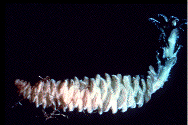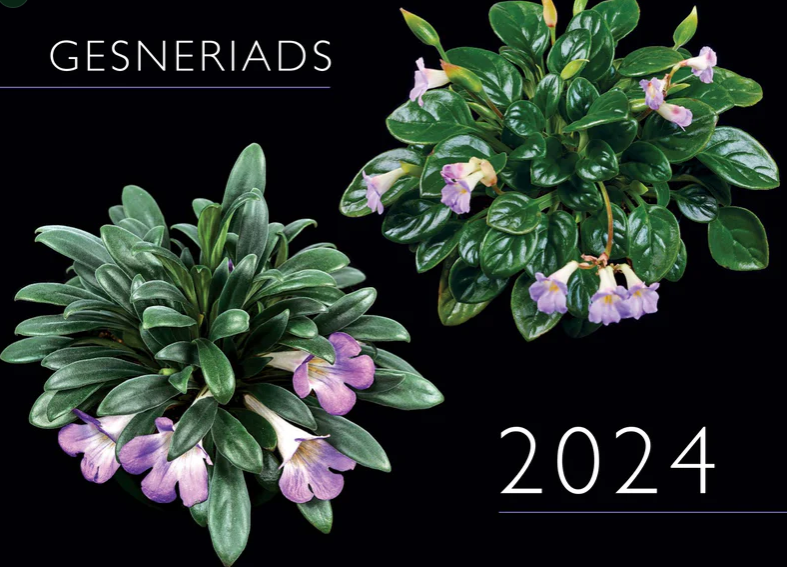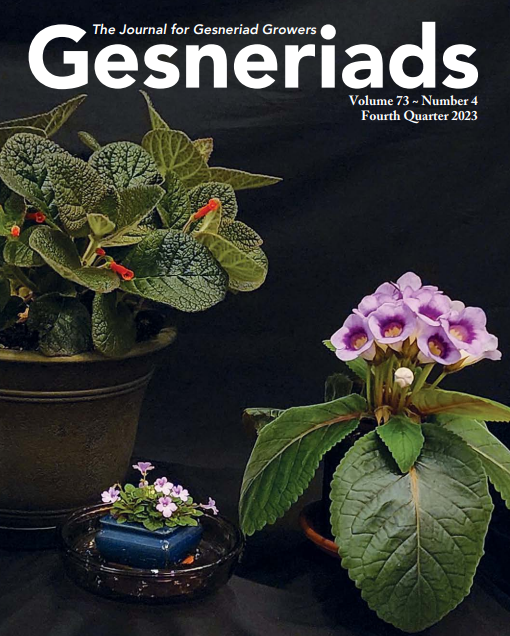Gesneriad Classification
Gesneriad are divided into three classifications. The classes are based on underground structures. This is the same format used in gesneriad flower shows.
The root stucture also has an effect on culture.
Tuberous Gesneriads
 These plants form underground storage organs that help the plants survive periods of drought in their native habitats. The tubers look similar to a potato. Most of these plants go into a dormant period after flowering, when all growth stops.
These plants form underground storage organs that help the plants survive periods of drought in their native habitats. The tubers look similar to a potato. Most of these plants go into a dormant period after flowering, when all growth stops.
The plant will lose all foliage and should be kept mostly dry until growth resumes. These are Sinningia tubers. The popular mini-Sinningias are members of this group.
It is important to realize that some plants that appear “dead” may in fact be dormant. Do not throw out a dormant plant by mistake!
Rhizomatous Gesneriads
 This group of plants also has a type of underground storage mechanism. Rhizomes form along the roots and are renewed each growing season.
This group of plants also has a type of underground storage mechanism. Rhizomes form along the roots and are renewed each growing season.
Scaly rhizomes have overlapping scales that resemble those of a pine cone. Most rhizomatous gesneriads have a dormant period, just like their tuberous relatives. Rhizomes can also form above the soil level. These are called propagules. This illustration shows a Kohleria rhizome.
Fibrous Rooted Gesneriads
Most gesneriads fall into this classification. Although the above two groups have fibrous roots in addition to tubers or rhizomes, this group lacks any type of storage organs. Many of the plants in this classification should never have completely dry soil. Others, that grow epiphytically, can tolerate a brief dry spell.


